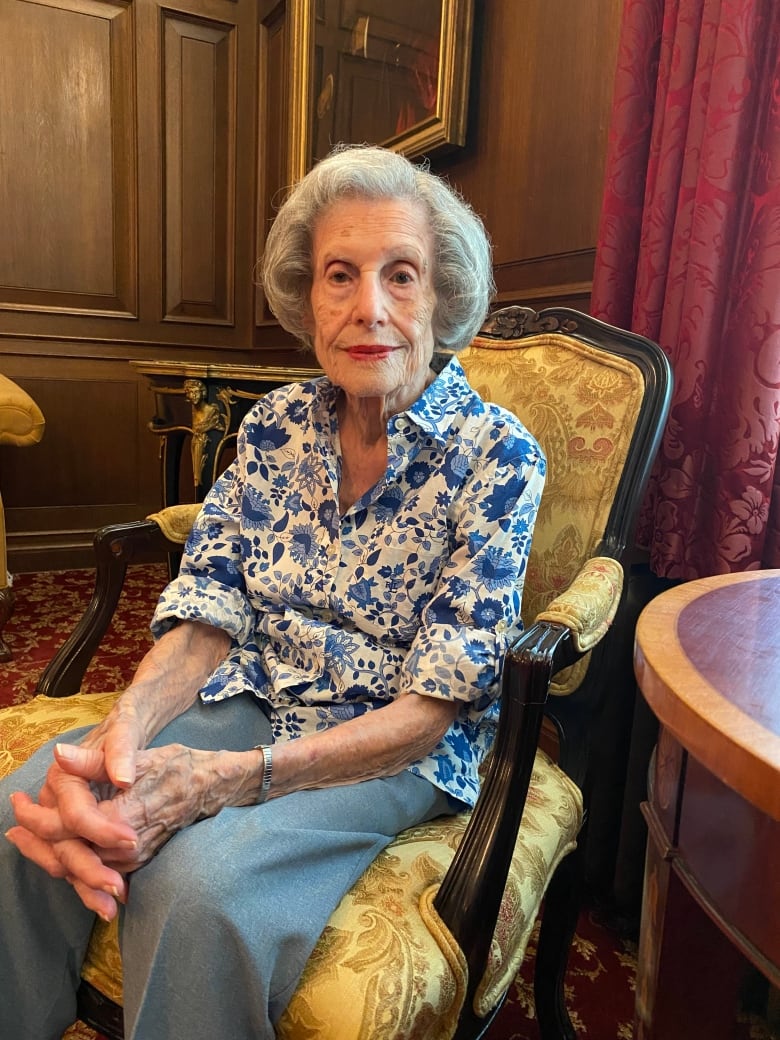A secret no more: Canada's 1st codebreaking unit comes out of the shadows
Examination Unit's covert nature kept it out of spotlight for decades

For years, Sylvia Gellman's loved ones were left in the dark about what she did for a living in the early 1940s.
But in a mansion that once sat along Laurier Avenue East, Gellman and her colleagues — many of whom were women — worked to assist a top secret mission: cracking codes and ciphers used in secret and diplomatic communications during the Second World War.
"No one outside knew what we were doing," the 101-year-old told CBC Ottawa on Saturday.
"You were so aware of it being a secret mission. And you didn't tell anybody. And I followed that very closely. I didn't even tell my family."
On Saturday morning, a plaque honouring the Examination Unit, Canada's first cryptographic bureau, was unveiled at the Laurier House National Historic Site, next door to where Gellman once worked.
The house was also the residence of William Lyon Mackenzie King, Canada's prime minister during the Second World War.
Gellman said while her loved ones knew she had a top-secret job, they hardly understood the breadth of her work. Those duties included typing out decoded Japanese messages before they were rushed to what was then called the Department of External Affairs.
Intelligence was also shared with the British government's Bletchley Park, a centre of Allied code-breaking where names like Alan Turing walked the halls.
Having the unit's contributions to Canada officially marked with a plaque was something of a pandemic project for Diana Pepall, who's researched the bureau since 2014.
It's no surprise that so few people know about the efforts of Gellman and her coworkers, Pepall said.
"When they left, they all got a memo saying, 'Just because war is over and you're no longer working here, you're not allowed to talk about this for the rest of your life.'" she said. "I've seen the actual memo."
One woman Pepall found during her research said that two years of her mother's life had always been unaccounted for — until they were filled in by the researcher's efforts.
"The mother was right there, and then gave a 20-minute speech that nobody had ever heard before on her work at the Examination Unit," Pepall said.
Helped strengthen Canada's independence
The unit's success also marked an important milestone in Canada's independence within the intelligence community.
In some ways, the Examination Unit grew into the Communications Security Establishment (CSE): the national cryptologic agency that provides the federal government with information technology security and foreign signals intelligence. Many employees went from one secretive organization to another, said Erik Waddell, who also works for CSE.
"The codebreaking work they did during the war proved, not only to our allies, but to Canadian government officials and ministers and the prime minister, that there was in fact a value in Canada having its own independent intelligence gathering ability," he said.
"[It also proved] that it was worth preserving that capacity after the war."
The work of Gellman and others, Waddell said, also "helped build, foster and maintain" partnerships with its allies, something that's been crucial to the establishment of Five Eyes, a key intelligence-sharing alliance on today's world stage.
For Gellman, the Examination Unit was more than just her place of work: it was a second home where she met two lifelong friends.
Having lost a brother in the war, Gellman said she understood her job's importance and was proud to work at the cryptographic bureau.
"I felt the whole thing was amazing, what was going on," she said. "I really did."


No comments:
Post a Comment